Knut Erik Tollefsen
Norwegian Institute for Water Research
Understanding Adverse Biological Effect Predictions Using Knowledge Graphs
Oct 28, 2022Abstract:Extrapolation of adverse biological (toxic) effects of chemicals is an important contribution to expand available hazard data in (eco)toxicology without the use of animals in laboratory experiments. In this work, we extrapolate effects based on a knowledge graph (KG) consisting of the most relevant effect data as domain-specific background knowledge. An effect prediction model, with and without background knowledge, was used to predict mean adverse biological effect concentration of chemicals as a prototypical type of stressors. The background knowledge improves the model prediction performance by up to 40\% in terms of $R^2$ (\ie coefficient of determination). We use the KG and KG embeddings to provide quantitative and qualitative insights into the predictions. These insights are expected to improve the confidence in effect prediction. Larger scale implementation of such extrapolation models should be expected to support hazard and risk assessment, by simplifying and reducing testing needs.
Prediction of Adverse Biological Effects of Chemicals Using Knowledge Graph Embeddings
Dec 08, 2021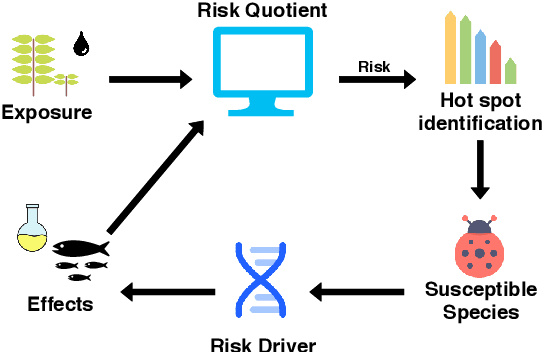
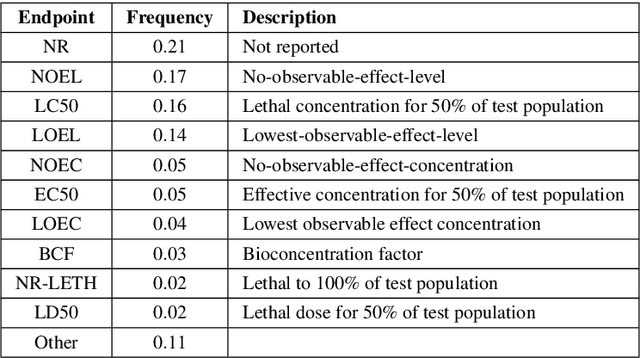
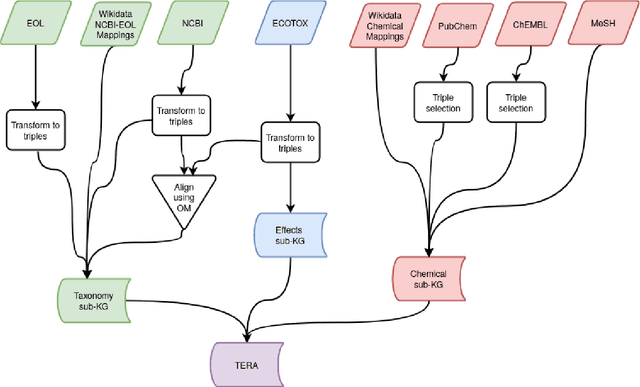
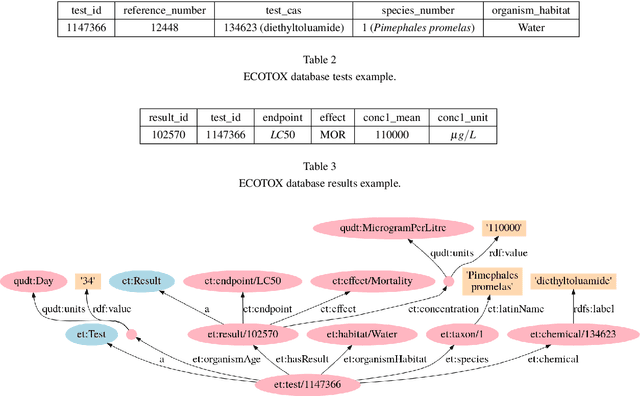
Abstract:We have created a knowledge graph based on major data sources used in ecotoxicological risk assessment. We have applied this knowledge graph to an important task in risk assessment, namely chemical effect prediction. We have evaluated nine knowledge graph embedding models from a selection of geometric, decomposition, and convolutional models on this prediction task. We show that using knowledge graph embeddings can increase the accuracy of effect prediction with neural networks. Furthermore, we have implemented a fine-tuning architecture which adapts the knowledge graph embeddings to the effect prediction task and leads to a better performance. Finally, we evaluate certain characteristics of the knowledge graph embedding models to shed light on the individual model performance.
Enabling Semantic Data Access for Toxicological Risk Assessment
Sep 11, 2019
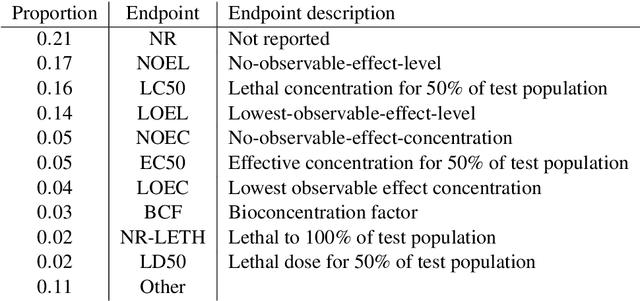


Abstract:Experimental effort and animal welfare are concerns when exploring the effects a compound has on an organism. Appropriate methods for extrapolating chemical effects can further mitigate these challenges. In this paper we present the efforts to (i) (pre)process and gather data from public and private sources, varying from tabular files to SPARQL endpoints, (ii) integrate the data and represent them as a knowledge graph with richer semantics. This knowledge graph is further applied to facilitate the retrieval of the relevant data for a ecological risk assessment task, extrapolation of effect data, where two prediction techniques are developed.
Knowledge Graph Embedding for Ecotoxicological Effect Prediction
Jul 02, 2019



Abstract:Exploring the effects a chemical compound has on a species takes a considerable experimental effort. Appropriate methods for estimating and suggesting new effects can dramatically reduce the work needed to be done by a laboratory. In this paper we explore the suitability of using a knowledge graph embedding approach for ecotoxicological effect prediction. A knowledge graph has been constructed from publicly available data sets, including a species taxonomy and chemical classification and similarity. The publicly available effect data is integrated to the knowledge graph using ontology alignment techniques. Our experimental results show that the knowledge graph based approach improves the selected baselines.
 Add to Chrome
Add to Chrome Add to Firefox
Add to Firefox Add to Edge
Add to Edge